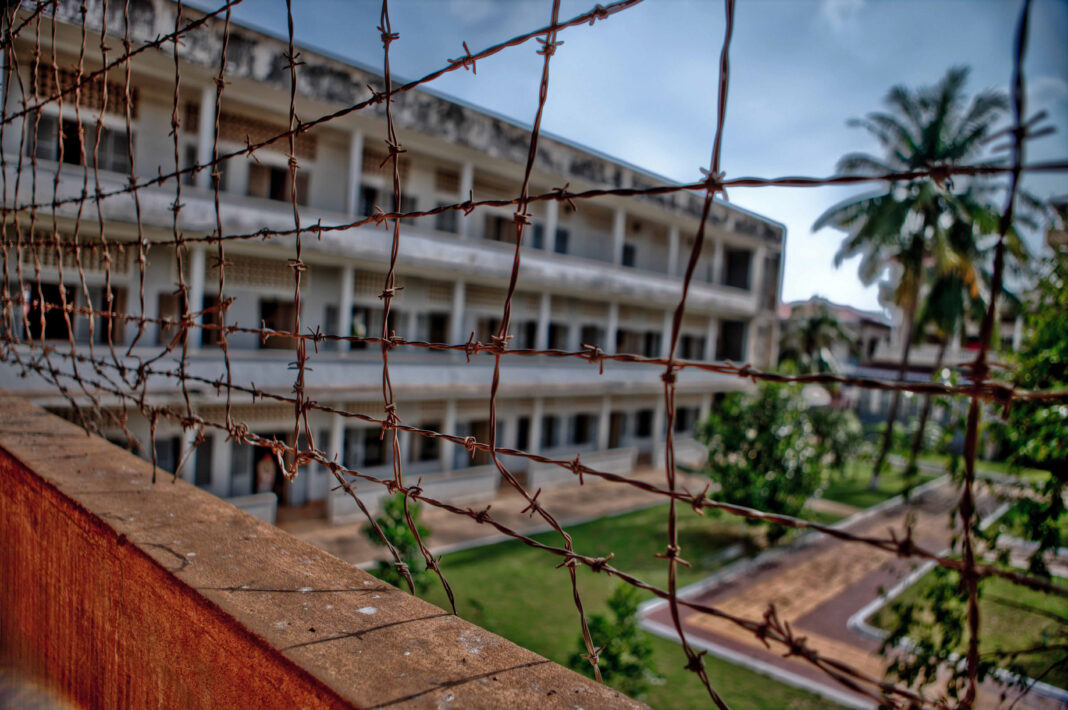by Arianna Morandi
In February 2012, Judge Kong Srim, President of the Supreme Court of the Extraordinary Chambers in the Courts of Cambodia, stated that “the crimes committed by Kaing Guek Eav are undoubtedly among the worst in human history. They deserve the maximum punishment available as a just and appropriate response to the pain they have caused to the victims and their families, and to the outrage they have aroused in the Cambodian people and throughout the world. Kieu Guek, alias Duch, was the commander of the top-secret Tuol Sleng prison, codenamed S-21, where some 18,000 people were tortured and killed.”
On the ashes of the Vietnam War in neighbouring Cambodia, after Nixon and Kissinger’s decision to ‘unleash hell in an irrelevant place’, the young Khmer Rouge found fertile ground on which to build their rise to power in April 1975. Until January 1979, they experimented in their country with a mad and radical project of building a new nation, which involved the evacuation of the cities, a return to peasant life and agricultural work for all, re-education camps for intellectuals contaminated by bourgeois society, and the extermination of ethnic minorities. Yale University’s Genocide Program estimates that 1.7 million people, or 21% of the local population, died under the communist regime in Cambodia, one of the worst human tragedies of the last century.
For many years, the issue of the crimes committed by the Khmer Rouge was obscured by the bipolar conflict and tensions between the Soviet Union and the People’s Republic of China; the Khmer Rouge continued to hold their seat at the UN until the early 1990s with the complicity of the US and China, who used it to punish the hated Vietnam.
However, the end of the Cold War opened up the debate on the atrocities committed by the Khmer Rouge. In 1997, negotiations began between the Cambodian Government and the UN on the establishment of an international tribunal. The agreement was reached in 2003, by which time Pol Pot was dead. Cross-vetoes and constant delays meant that the Extraordinary Chambers in the Courts of Cambodia did not begin work until July 2007. It could only try the most senior leaders and those most responsible for crimes committed between 17 April 1975, the day the Khmer Rouge entered Phnom Penh, and 6 January 1978, the day Pol Pot’s regime fell after the intervention of Vietnamese troops.
The first decisions by the judges came in 2010 with the 26 July verdict against Duch, who was sentenced to thirty-five years in prison for war crimes and serious violations of the UN Convention. In February 2012, Duch’s appeal was also concluded, with the Supreme Court upholding the prosecution and civil parties’ appeal and increasing the sentence to life imprisonment. More than a thousand people watched the verdict being read in the public area or in front of the screens outside the court.
On 15 September 2010, four more members of the regime were indicted: Khieu Samphan, then Head of State; Nuon Chea, Pol Pot’s right-hand man; Ieng Sary, Minister of Foreign Affairs; and Ieng Tirith, Sary’s wife and Minister of Culture. Ieng Sary died in 2013, while Sary’s wife was declared unfit to stand trial in 2012 and the case against her was dropped.
This left Khieu Samphan and Nuon Chean as the only two defendants. They were first convicted of crimes against humanity in 2014 and sentenced to life imprisonment, which was upheld on appeal in 2016. In 2018, they were both convicted of genocide in connection with the massacres of the Vietnamese minority, the Cham Muslim minority and other religious groups. Their lawyers appealed, but in August 2019 Nuon Chea died in prison. On 22 September 2022, the Supreme Court confirmed the life sentence for Khieu Samphan (now 91) in a packed courtroom in the presence of hundreds of Cambodians who listened in silence as the verdict was read out.
This final decision marked the end of the Tribunal’s work. There will be no further criminal proceedings, but the Extraordinary Chambers will continue its work for at least another three years, disseminating information about its work and monitoring the enforcement of the two prison sentences and the compensation to civil parties. The Tribunal’s effectiveness in its seventeen years of operation and its legacy are now the subject of much debate inside and outside Cambodia.
On the cover photo, The top-secret Tuol Sleng prison in Phnom Penh, now the Tuol Sleng Genocide Museum © paul cowell/Shutterstock.com
























